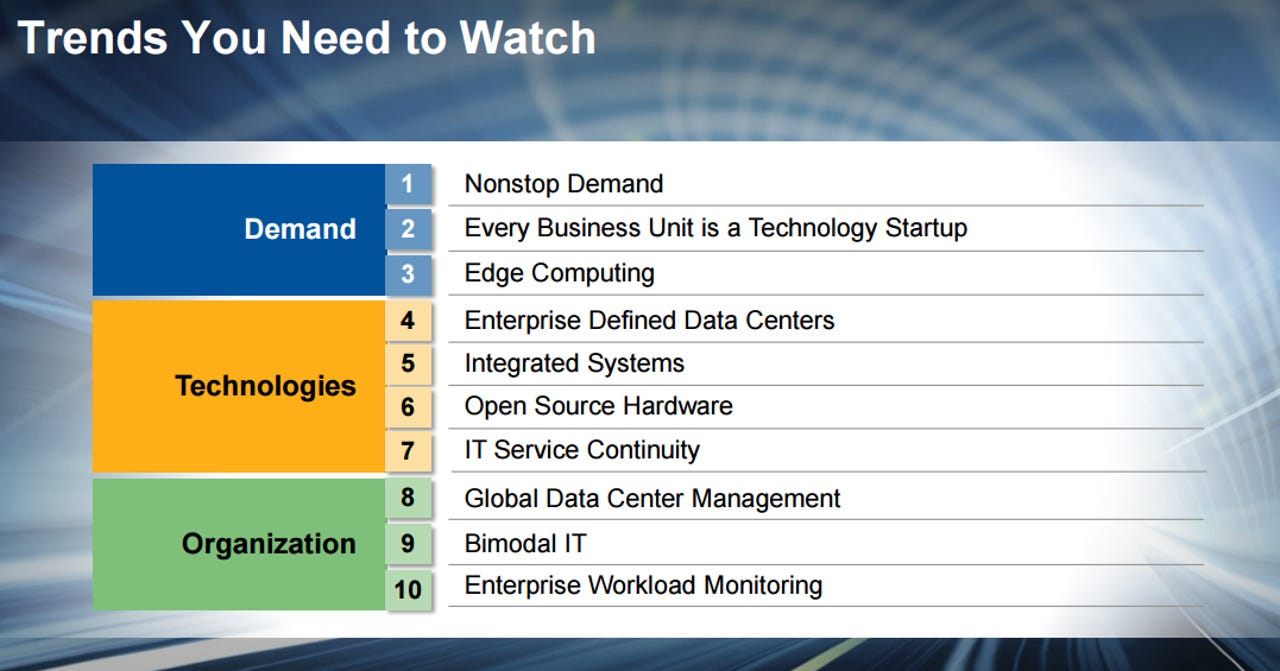Here are the trends that may rattle your IT teams

ORLANDO--Emerging trends such as smart machines, the Internet of things and digital business are reinventing tech leadership roles, but the IT department is going to be stuck with the details behind the scenes.
Given that nearly every enterprise is going to be hybrid and procuring computing resources from multiple sources---cloud, on-premise and other places like platforms as a service---Gartner's presentation on the trends IT departments need to watch is worth noting.
Here's a look at Gartner analyst David Cappuccio's 10 emerging trends that'll impact IT operations. Cappuccio delivered the talk at the Gartner Symposium ITxpo.

Some of these trends are no brainers and aren't exactly new. These trends are notable since they're more about the infrastructure needed to support digital transformation instead of the ideas that look great on the white board. Demand for computing power has been nonstop for years and business units have more of a say. However, some concepts are worth pondering a bit. Here's a look at what stood out for me.
The enterprise defined data center. The concept here is that companies are going to deliver compute resources to the business in various ways. Call it the school of whatever works. The Gartner chart on the newfangled data center included everything from public cloud to hosting to SaaS to PaaS to disaster recovery sites to co-located data centers to owned and operated infrastructure.
As for IT, the role of the enterprise defined data center revolves around integration and orchestration. Services will be delivered from the right place for the right place at the right time. The idea gets around all the software defined and hybrid data center talk. The reality is that IT departments will use whatever works, but the real work will revolve around the integration.
Integrated systems evolution. After seeing Gartner's slide on this one, I have to conclude that it's best to check in on the topic in 2020 or so. According to Gartner, integrated systems are in the "evolving" stage where appliances are prebuilt to a vendor spec and operated through virtualization. In theory, highly evolved systems will arrive beyond 2020 and be able to adapt, be intelligent and software driven. In other words, integrated systems are more about the vendor stack sale today.
Bimodal IT. The idea here is that there are two modes for IT. One protects the business and the other enables it. The trick for the CIO is to do both and not be cornered into keeping the lights on and allowing business line leaders take all the glory. Bimodal IT is critical, but won't most executives and technology pros want to be on the side of agility, innovation and speed?